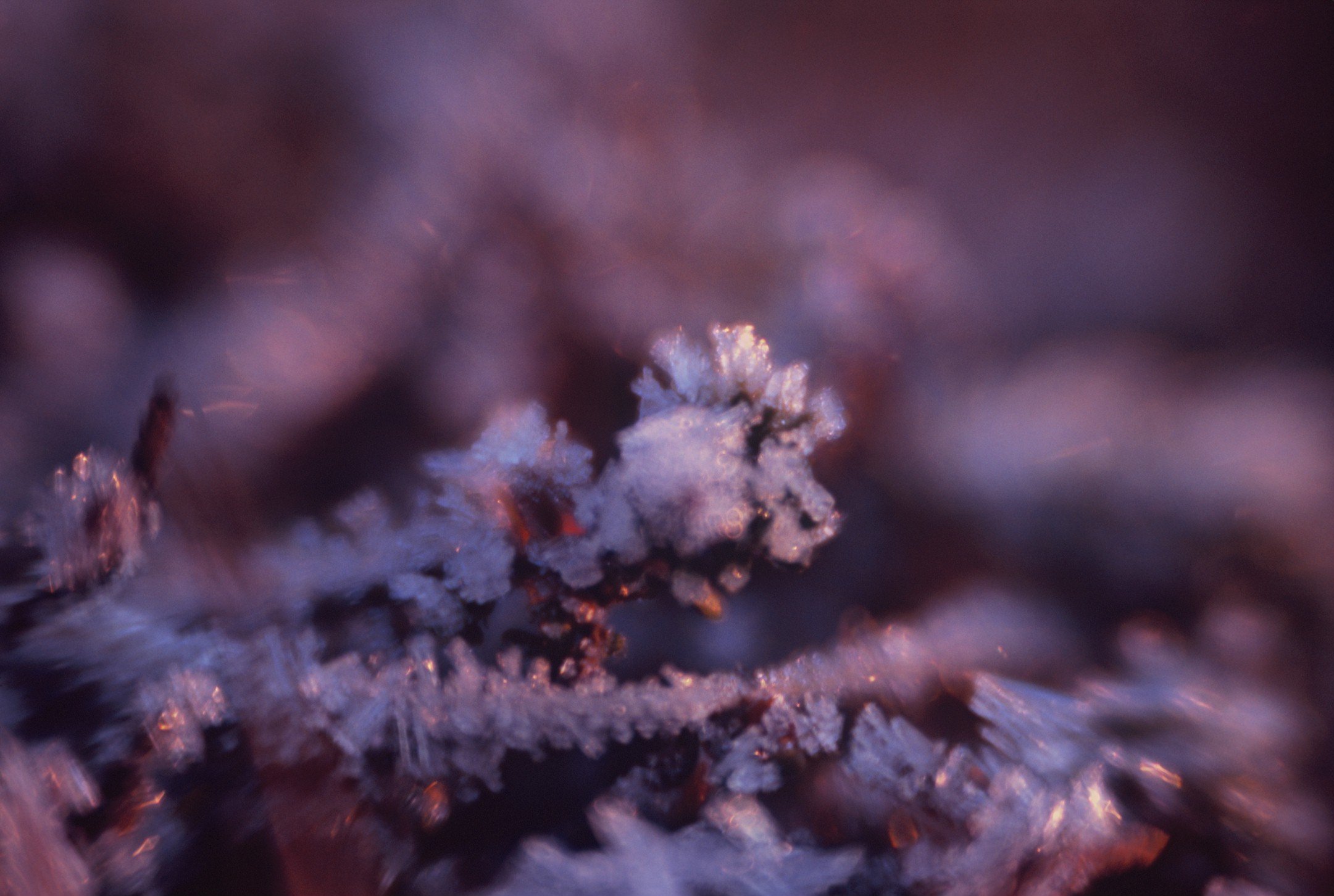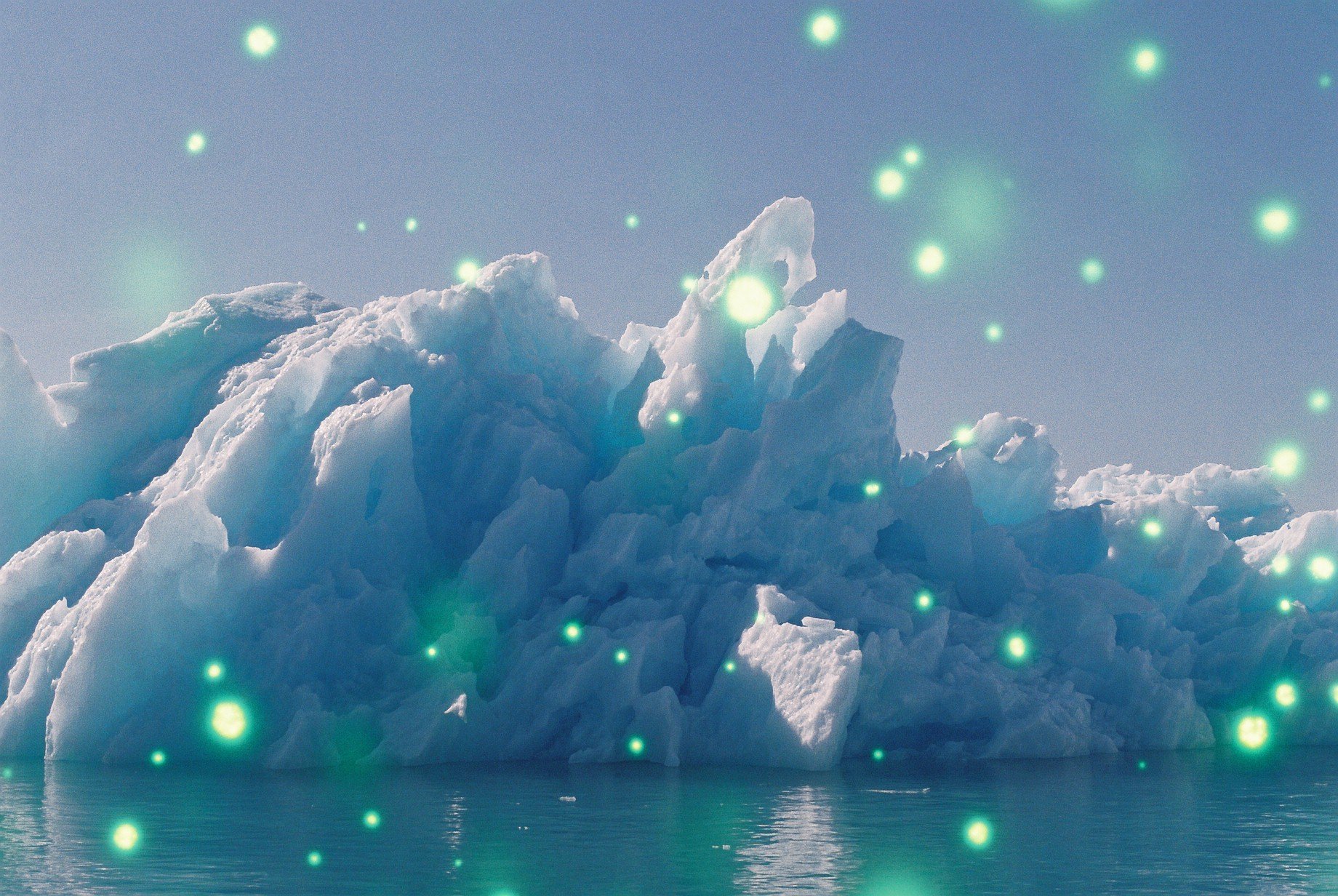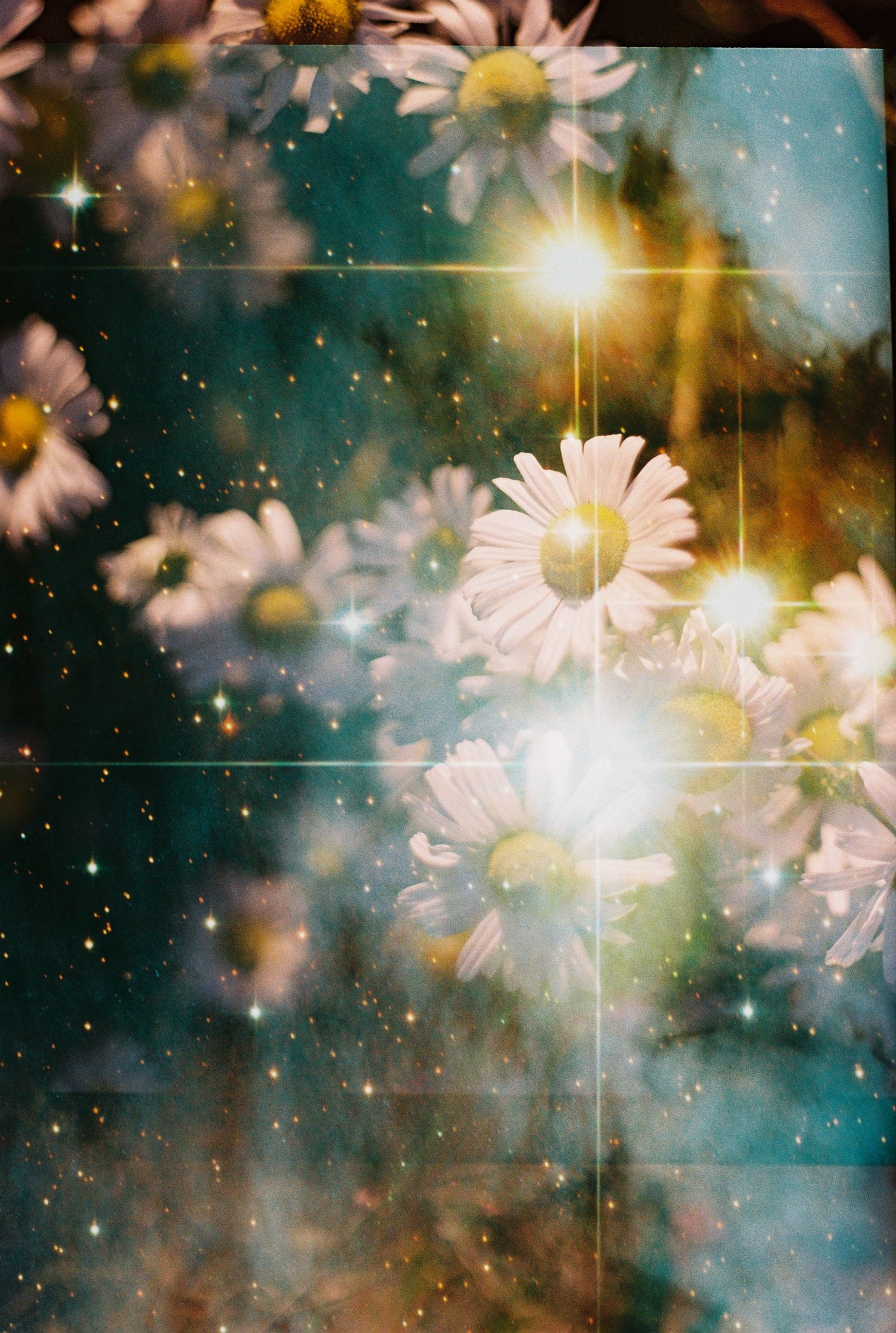This month’s featured photographer is Pam Stach, who posts her work on Instagram as https://instagram.com/jeanne_d_arctique. You may already have come across her spectacular film photos of her home, Greenland. As you’ll see in this selection of work, she uses a variety of film stocks and experimental methods to translate for us the natural beauty of the landscape. As a person born in Greenland she has a unique native perspective on a place that is often viewed as exotic by outsiders.
I have included both her own descriptions of her photographs and her answers to some interview questions I posed.
This is made with a filmsoup with handpicked mixed (arctic) flowers. Among those flowers were fireweed, camomile, and yellow poppies. I have picked this one because I find it to be very delicate with the pink tones and the droplets on the grass.
You live in Nuuk, the largest city in Greenland. Have you always lived in Greenland?
I have lived in many places. I was born in Greenland, but shortly after my mom and I moved to Sweden and then Denmark when I was 5 years old. When I was 11 we moved back to Greenland to a small town called Nanortalik. After graduation I spent one year in Washington State as an exchange student. Moved back to Greenland, got a bachelor degree and moved to Paris, France and lived there for 3.5 years. After that I went back to Denmark to get my master degree in anthropology and then I moved back to Greenland and have been here since.
When did you start practicing film photography? Do you also take digital photos?
I started when I lived in Paris. It took me a long time to figure out what I liked to photograph. But when I moved back to Greenland I discovered I loved taking landscape pictures. I don’t take digital pictures - only with my phone. It never really appealed to me.
This was such a cold day and very windy too. It was minus 20 degrees Celsius with a chill factor of minus 40 degrees Celsius. And I was quite lucky that the batteries didn’t die. I was actually surprised how the birds (a mix of ravens and seagulls) seemed to enjoy this rough weather, and the lighting of the tesla II film just adds more drama while the halo from the Daguerre Achromat art lens creates some sort of harmony or balance. Here you also see the sea smoke and snow blowing away on the mountains out in the horizon.
What are/is your favorite camera/lens?
I think my favorite is the Olympus OM-4 because it is small and lightweight and therefore easy to have with me wherever. But I also love my Daguerre Achromat art lens a lot, but with this is, since it is rather heavy and large, I use this one with more intent.
The photo below was taken on another very cold day, using the Achromat lens and Lomochrome Turquoise film. I was out driving with a friend and I asked him to stop the car to capture this. Sometimes you have to be really quick because you never know if the batteries of your camera are going to die.
You work shows a love of experimentation. You have tried souping film as well as using a range of “specialty” films with color shifting or other altering effects. Can you tell us what makes you gravitate toward using these films to document what is already – to most of your viewers – a very unique landscape?
Yes, Greenland has a very unique landscape, but what I truly like about these “specialty” films and other experimentations is that it gives a fresh and unique view on Greenland from a native point of view. Greenland has always been documented from outsiders and rarely from ourselves. My approach is a fresh take and I would also argue a more playful take on it. I have noticed that the main narrative about the arctic is that it is a harsh and unfriendly environment, but that is very untrue for us to have lived here for millennia and thrived. I think what I am trying to do is to offer an alternative view on the arctic.
In South Greenland we get drift ice from the Northern East coast of Greenland with rather big icebergs. The drift ice is so massive you can see it from space with swirls full of eddies. It is a summer occurrence and they do bring colder air but also very fresh air since they release thousands of old captured air.
Above left: The spots of the Revolog Volvox film give a sense something magical is going on here. For me, nature is magical. Above right: Double exposure of flowers and space. We are all made of stardust.
Readers would love to hear more about your sense of connection to place. What specific features do you most enjoy photographing in different seasons?
In the winter it is the ice, the snow, and often the wind I have come to realize. Maybe because it is easier to capture due to the snow swirling around. Spring is really my least favorite season, but I have discovered black and white photography goes well here. Summer is all about the flowers and lakes and other greenery scenes. And the autumn is the crispy weather along with the classic autumn colours. All year is always the mountains, the sea and our sunsets/sunrise.
I woke up at 3 in the morning to take this picture. I wanted to capture the star and the mountains mirrored on the surface of the sea, but I had no idea that I would also capture the earliest sign of the dawn. Again, light leaks are simply the best.
This was taken during a time where I walked a lot. I was in a midst of a heartbreak and it seemed like the only soothing thing was walking no matter the weather. This was taken during the colder days and the glacier at the bottom of Nuuk fiord had been unusually active that winter.
What things have you noticed changing in your environment that might be related to climate change?
That the weather has become unpredictable. Even the elders can’t recognize the seasons anymore. The temperatures are also extreme while the average temperature has become higher. Another thing is that the precipitation has been altered in that sense that our summer and autumn has become a lot more and unusually wet with significant consequences.
Meanwhile during winter we don’t get as much snow anymore and that is not good for our plants because when the temperature drops the snow is not there to protect them from the harsh cold and strong winds due to the chill factor. Which leads to a bad berry season among other things. And last year we could feel and see the smoke from the forest fires from Canada and one day we could also smell it. It was a truly bizarre experience.
This is from the early autumn where the nights are cold enough for the lakes to have a thin layer of ice. This is a after a mild storm we had earlier and it had broken up the ice and blown it across the lake to the opposite shore, actually making the lake ice free again.
Film Shooters Collective would like to thank Pam for sharing just a few of her remarkable images, as well as her insights about her homeland. Please take a look at more of her work at https://instagram.com/jeanne_d_arctique and give her a follow. Stay tuned to this blog for more film photographer features!












